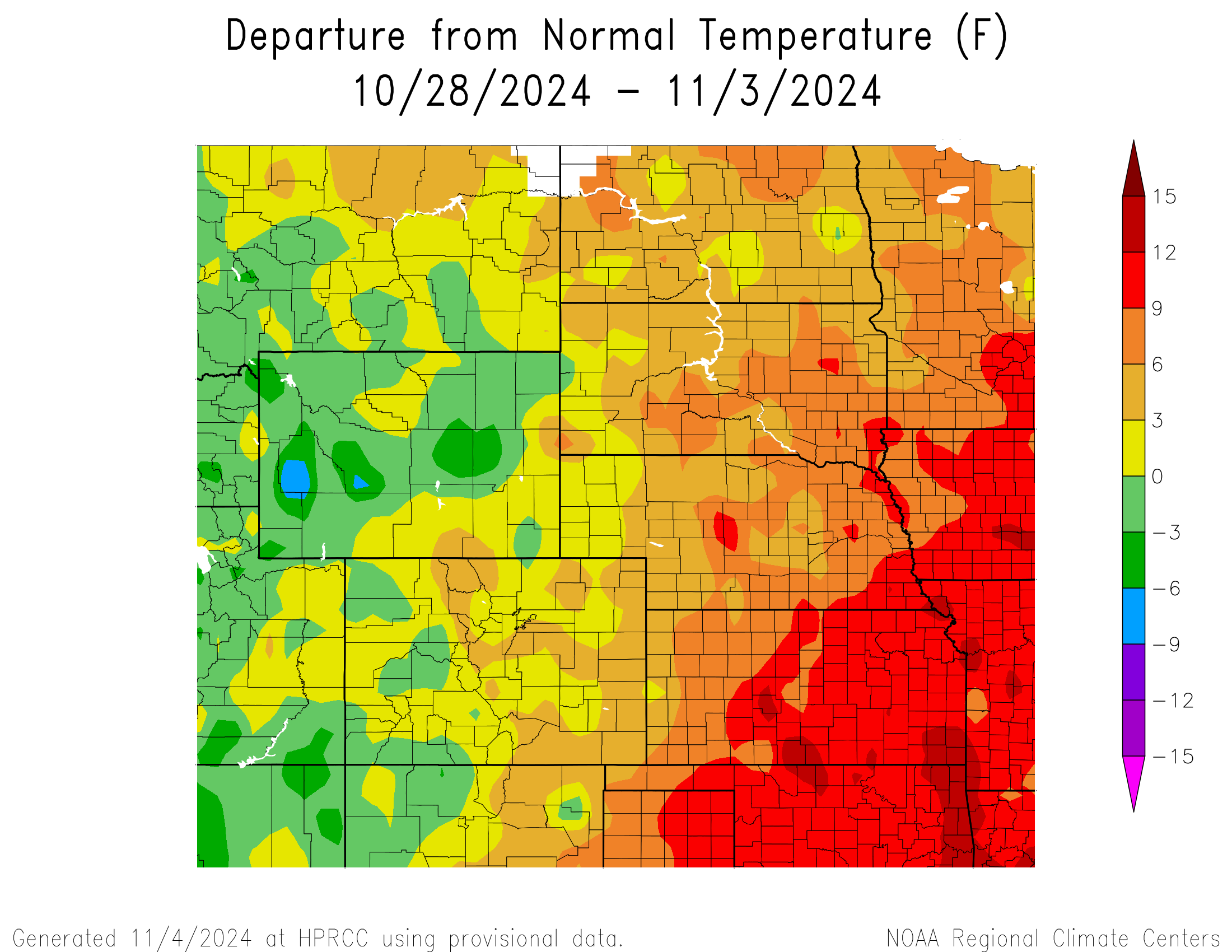Temperature
This week featured above normal temperatures for a majority of the region. The warmest regions were southeastern Nebraska, and central and eastern Kansas reaching temperatures 9°F to 12°F above normal with some areas reaching 12°F to 15°F above normal. The coldest region was western Wyoming reaching temperatures 6°F to 9°F below normal.
This week featured above normal temperatures for the eastern portion of the region and below normal temperatures for the western portion of the region. The warmest region was northwestern North Dakota, eastern Nebraska, and central and eastern Kansas reaching temperatures 9°F to 12°F above normal with some areas reaching 12°F to 15°F above normal. The warmest temperature was 77°F in Chanute, Kansas which is 11°F above normal for the area. The coldest region was scattered regions in Wyoming reaching temperatures 6°F to 9°F below normal with some areas reaching 9°F to 15°F below normal.
The warmest region was northwestern North Dakota, eastern Nebraska, and central and eastern Kansas, which reached 9°F to 12°F above normal with some areas reaching 12°F to 15°F above normal temperatures. The coldest region was scattered throughout central Wyoming reaching temperatures 6°F to 9°F below normal with some areas reaching 9°F to 15°F below normal. The coldest temperature was 18°F in Fraser, Colorado which is 2°F above normal for the area.



Precipitation
Precipitation amounts varied in the region from 800% of normal in eastern Kansas to 2% of normal in most of northwestern North Dakota, southeastern Colorado, and western Kansas. Wonsevu, Kansas received 7.3 inches of precipitation, which is well above the 0.07 inch normal; most of this fell on the 2nd and 3rd. Drought continues in the region. D0 (abnormally dry) conditions increased from 86% to 89%. In the region, North Dakota experienced the highest increase in D0 conditions by 9%.


Winter Wheat
According to the USSA NASS, three states within the region are rated as poor to very poor for winter wheat – Colorado (23 percent), Kansas (20 percent), and Nebraska (29 percent). The poor to very poor conditions of the winter wheat could be contributed to the topsoil in the region being rated as poor to very poor.


